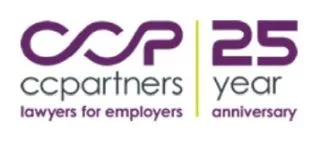Following consultation processes led by Harry Arthurs and Doug Stanley over the past few years, earlier this week the WSIB has released a set of technical discussion papers which lay out the path ahead for a proposed reformation of the employer classification and experience rating systems.
The proposed changes are broad in scope and will substantially change the way in which employers report insurance earnings, predict their annual premiums, and measure their own performance from year to year. Claim by claim experience rating will ultimately be discontinued and replaced with this new system.
The current system
All Schedule 1 employers are classified within nine business activity classes. Within each of these classes, there are several rate groups. In total there are 155 rate groups. Within each rate group are a number of classification units. In total there are 840 classification units. An employer's rate classification depends on the business activity of that employer. All employers who are classified in the same rate group are assessed the same base premium rate, irrespective of that employer's accident history or claim cost performance. An employer with multiple business activities is eligible to obtain multiple rate classifications contingent on its ability to segregate the payroll for each activity.
An employer with a great health and safety program is assessed the same premium rate as another employer in the same rate group that might have a terrible (or no) health and safety program. To adjust for this apparent lack of fairness, the WSIB created a number of experience rating programs. The most common are the Merit Adjusted Premium or MAP (which applies to small employers), CAD-7 (which applies to construction employers who are not in MAP), and NEER (which applies to all other employers who are not in CAD-7 or MAP). The vast majority of employers who participate in these experience rating programs see only a nominal premium adjustment irrespective of how well they perform each year. In recent years, the WSIB introduced a fatal claim premium adjustment, whereby when an employer's worker dies as a result of a workplace accident, an employer would lose its entire experience rating rebates for the year of the fatality. The impact for a large employer could be millions of dollars (far in excess of the maximum fine under the Occupational Health and Safety Act) and for a small employer could be nominal. An employer already in a surcharge position would have no additional premium surcharge.
In some cases, like construction or health care, the current classification system has become hopelessly complex. The complexities have resulted in many appeals over classification decisions. Administration of multiple classifications and payroll segregation can be administratively difficult despite the potential financial benefit.
Similarly, employer behaviour in claims management has been influenced significantly by the manner in which an experience rating program affects that employer. Where there is a negligible experience rating impact, many employers may take minimal steps to comply with return to work or re-employment obligations. The impact of these variations in behaviour is felt by all employers in the same class, though measuring that impact is almost impossible for an individual employer.
Summary of the proposed changes
The WSIB is proposing to replace the 155 rate group and 840 classification unit system with a 22 class structure based on the 2012 North American Industry Classification system (NAICS). Employers who could fall into more than one class now would be classified in only one class, determined by the predominant business activity.
For each class, an average premium rate would be set based on the collective liability of new claims costs of employers in that class, past unfunded claim costs for the class, and administrative costs of the system. A rate adjustment would then be applied to each individual employer based on their own claims experience and insurable earnings and the actuarial predictability of future costs. Different risk bands would then be set for each class with a different premium rate for each band.
The use of risk banding within each class will replace the current experience rating programs. Employers would then no longer be rewarded with an annual lump sum premium rebate or levied a lump sum surcharge, but would rather see an opportunity to use a consistent improvement in performance from year to year to move into lower risk bands and lower premium rates. Each risk band will represent about a 5% change in premium rate.
The premium risk band system would provide an upper limit to protect employers from a sudden increase in costs due to a catastrophic event. However, the WSIB also proposes that in cases where an employer's performance is consistently poor with high and disproportionate costs year after year, a further premium surcharge may apply.
Future Consultations
The WSIB intends to immediately commence a period of additional consultation with stakeholders. The first stage will be to engage in a round of high level technical consultations with stakeholders. CCPartners' Rob Boswell will be participating in this round of consultations. Following these technical sessions, it is expected that the WSIB will conduct public hearings and further stakeholder consultations and education sessions.
We anticipate that the WSIB may wish to move quickly into a transitional period of change to this new system starting as early as 2016 or 2017 with a transition period likely lasting three years.
We will provide further updates as this consultation unfolds, and are able to provide education, advice and representation to employers and employer associations throughout this consultation and implementation of this rate framework reform. Click HERE for a directory of lawyers at CCPartners who can assist with all matters relating to the WSIB.
The content of this article is intended to provide a general guide to the subject matter. Specialist advice should be sought about your specific circumstances.

